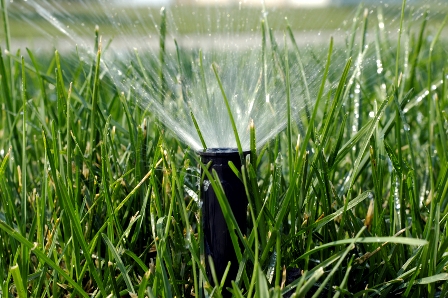
For the third year in a row, the city of Luverne has started the spring season with a watering ban to limit the use of city water.
Council members took action on the ban during their Tuesday night, April 28, meeting following discussion about Luverne’s limited water supply.
“It’s no big secret the static and pumping levels aren’t going in the right direction,” City Administrator John Call said about the city’s well levels.
He said the city of Luverne, which relies on a shallow water aquifer system, is in a regional drought area and has received minimal rainfall this spring.
“We’ve had minimal moisture since July of last year, leading to low static and pumping levels for most of the shallow wells in our system,” Call said.
Because of the dry conditions and Luverne’s shallow aquifers, outdoor watering and sprinkling is not allowed.
The ban approved at Tuesday’s meeting makes exceptions for some watering, such as new lawns, new seeding, new sod and hand garden sprinkling.
The water restriction will be in effect until further notice.
Council members remarked at Tuesday’s meeting that Luverne will be connected to the Lewis and Clark Regional Water System later this year, ensuring a more reliable water supply, even during regional droughts.
Last year at this time, the watering ban was put in place when Luverne and Rock County were roughly 15 inches below normal rainfall.
Then the flood of June 2014 delivered 15 inches of rain in one weekend, raising static well levels and prompting the ban to be lifted.
Since then, however, the area received little rainfall, and Rock County is now several inches below normal for the year, according to local weather recorder Troy Thone.
“Since July 2014 (past 10 months) we've received only 8.55 inches of rainfall which is over 10 inches (10.51) below normal,” Thone said.
“In looking at our number of days with measurable precipitation, our normal is 82 days and we have received only 60, so we are below normal by 22 days.”
His data compares January 2014 through April 2015 to compare and include the June 2014 floods.
“Even after the significant rainfall in June 2014, we are still over 5 inches below normal for the past 16 months, Thone said. “Days with measurable precipitation is even further below normal by 23 days.”
He said the U.S. Drought Monitor has the entire area classified as “D1 — moderate drought,” which is the second worst out of five drought classifications. D4 is "exceptional drought" and D0 is "abnormally dry.”
“So it goes without saying that conditions are extremely dry,” Thone said
The Drought Monitor describes D1 level impacts as "Some damage to crops, pastures; streams, reservoirs, or wells low, some water shortages developing or imminent; voluntary water-use restrictions requested."


